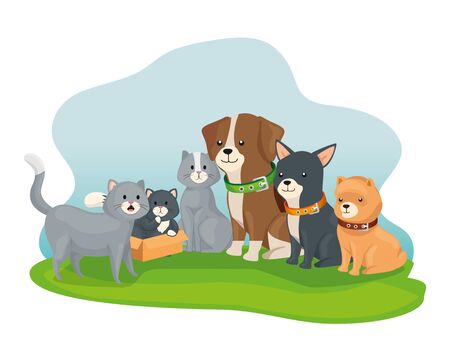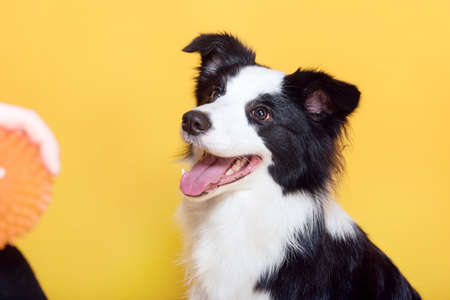1. Understanding Your Dog’s Sleeping Habits
Just like humans, dogs have their own unique sleeping styles and preferences. Some love to sprawl out, while others curl up in a tight ball. Understanding your dog’s natural sleeping habits is key to choosing a bed that provides the right support and comfort.
Different Sleeping Styles by Breed
Dogs come in all shapes and sizes, and so do their sleeping styles. Here are some common sleeping positions and the breeds that tend to favor them:
| Sleeping Style | Description | Common Breeds |
|---|---|---|
| The Sprawler | Lays flat on their side or back with legs stretched out. | Labrador Retriever, Golden Retriever, Greyhound |
| The Curler | Curls up into a tight ball, often tucking their nose under their tail. | Siberian Husky, Dachshund, Shiba Inu |
| The Burrower | Loves to dig or nest under blankets or pillows. | Chihuahua, Miniature Schnauzer, Dachshund |
| The Leaner | Prefers resting against something for support. | Pit Bull, Boxer, Great Dane |
| The Snuggler | Loves to cuddle up with people or other pets. | Cavalier King Charles Spaniel, Pug, French Bulldog |
Why Sleeping Style Matters When Choosing a Bed
Selecting the right dog bed isnt just about size—it’s about supporting your pup’s natural behaviors. A sprawler needs extra space to stretch out comfortably, while a burrower may feel more secure in a covered or cave-style bed. Paying attention to these details can make all the difference in your dog’s sleep quality.
The Importance of Proper Support
A well-chosen bed not only enhances comfort but also supports joint health. Large breeds like Great Danes benefit from orthopedic beds that provide extra cushioning for their joints, while smaller breeds may prefer softer, plush options that keep them warm and cozy.
Matching Bed Type to Your Dogs Needs
If your dog loves to curl up, opt for a round or bolstered bed that provides a sense of security. If they like stretching out, a flat mattress-style bed gives them plenty of room. For older dogs or those with arthritis, memory foam beds offer excellent support and pressure relief.
2. Types of Dog Beds: Which One is Right for Your Pup?
Choosing the right dog bed isnt just about comfort—it’s also about supporting your dog’s health and sleep quality. There are several types of dog beds available, each designed to cater to different needs. Lets explore the most popular options to help you find the perfect fit for your pup.
Orthopedic Dog Beds
Orthopedic dog beds are ideal for senior dogs or those with joint pain, arthritis, or hip dysplasia. These beds are made with memory foam or supportive cushioning to relieve pressure on joints and provide extra comfort.
Best For:
- Senior dogs
- Large breeds prone to joint issues
- Dogs recovering from surgery
Bolster Dog Beds
Bolster beds feature raised edges or cushioned sides that provide a sense of security. Many dogs love resting their heads on the bolsters, making these beds great for pups who enjoy a little extra support.
Best For:
- Dogs that love to curl up
- Anxious dogs that seek security
- Pups that like headrests
Cave-Style Dog Beds
Cave-style beds, also known as hooded or covered beds, create a cozy, enclosed space that mimics a den. These are especially great for small breeds and dogs that love to burrow.
Best For:
- Small breeds like Chihuahuas and Dachshunds
- Nervous or shy dogs
- Pups that love to snuggle under blankets
Elevated Dog Beds
Elevated dog beds keep your pup off the ground, allowing better airflow and keeping them cool. These are especially useful in warmer climates or for outdoor use.
Best For:
- Dogs that overheat easily
- Pets in warm climates
- Outdoor lounging
Comparison of Dog Bed Types
| Type of Bed | Main Benefit | Best For |
|---|---|---|
| Orthopedic Bed | Provides joint support and pressure relief | Seniors, large breeds, dogs with arthritis |
| Bolster Bed | Adds security and head support | Curlers, anxious dogs, pups that like headrests |
| Cave-Style Bed | Mimics a cozy den for extra comfort | Small breeds, nervous dogs, burrowers |
| Elevated Bed | Keeps dogs cool and provides airflow | Pups in warm climates, outdoor use, overheating dogs |
No matter your dogs breed or sleeping style, there’s a bed out there to match their needs. By understanding the differences between these options, you can make an informed choice that keeps your furry friend happy and well-rested.

3. Choosing the Right Size and Material
Picking the perfect dog bed isnt just about style—it’s about making sure your furry friend is comfortable and supported. When choosing a bed, you’ll need to consider size, material, and your dog’s specific needs. A well-chosen bed can help improve their sleep quality and overall health.
How to Choose the Right Size
The right bed size depends on your dog’s weight, sleeping position, and whether they like to stretch out or curl up when resting. A bed that’s too small won’t provide enough space, while an oversized bed may not offer the snug feeling some dogs prefer.
Dog Bed Size Guide
| Dog Weight | Recommended Bed Size |
|---|---|
| Under 20 lbs (Small breeds like Chihuahuas, Yorkies) | Small (24″ x 18″) |
| 20-50 lbs (Medium breeds like Cocker Spaniels, Beagles) | Medium (30″ x 24″) |
| 50-90 lbs (Large breeds like Golden Retrievers, Boxers) | Large (36″ x 30″) |
| 90+ lbs (Giant breeds like Great Danes, Mastiffs) | X-Large (42″ x 36″ or bigger) |
Selecting the Best Material
The material of your dog’s bed affects their comfort, warmth, and overall health. Some materials are better for dogs with allergies, while others provide extra support for older pets with joint issues.
Common Dog Bed Materials and Their Benefits
| Material | Benefits |
|---|---|
| Memory Foam | Great for older dogs or those with arthritis; provides excellent joint support. |
| Cotton/Polyester Blend | Soft and breathable; easy to wash and maintain. |
| Cedar Fill | Naturally repels odors and insects but may not be as cushioned. |
| Fleece or Plush Fabric | Keeps dogs warm; best for small or short-haired breeds. |
| Nylon or Canvas | Tough and chew-resistant; ideal for active dogs who are rough on beds. |
Your Dog’s Special Needs
If your dog has allergies or sensitive skin, hypoallergenic materials like organic cotton or memory foam are good choices. For puppies or chewers, a durable fabric such as canvas can prevent frequent replacements. Dogs who tend to overheat might prefer breathable fabrics like mesh or cotton blends.
A Quick Tip!
If youre unsure about the right size, measure your dog while they’re sleeping in their natural position and add a few inches for extra comfort.
4. Best Dog Beds for Small, Medium, and Large Breeds
Choosing the right dog bed depends on your pup’s size, sleeping habits, and specific needs. A Chihuahua won’t need the same type of bed as a Great Dane, so selecting a bed that fits their requirements is essential for their comfort and health.
Small Breed Dog Beds
Small dogs, such as Chihuahuas, Dachshunds, and Pomeranians, love to curl up in cozy spaces. They often prefer plush or cave-style beds that provide warmth and security.
Recommended Features:
- Bolstered sides: Provides a sense of security and a place to rest their head.
- Soft, cushioned material: Helps keep them warm since small breeds tend to get cold easily.
- Washable cover: Makes cleaning easy, especially for dogs prone to shedding.
Top Picks for Small Dogs:
| Dog Bed | Main Features | Best For |
|---|---|---|
| Cave-Style Bed | Enclosed design, soft lining | Anxious pups who love burrowing |
| Bolster Bed | Padded edges, plush cushion | Dogs who like resting their heads on support |
| Heated Dog Bed | Thermal heating feature | Toy breeds prone to getting cold |
Medium Breed Dog Beds
Medium-sized dogs like Cocker Spaniels, Border Collies, and Bulldogs need a balance of space and support. They benefit from orthopedic foam or memory foam beds that provide joint support while still being soft and comfortable.
Recommended Features:
- Memory foam: Relieves pressure on joints, ideal for active or older dogs.
- Slightly raised edges: Offers comfort without making it too confined.
- Tear-resistant fabric: Durable enough for moderate chewers.
Top Picks for Medium Dogs:
| Dog Bed | Main Features | Best For |
|---|---|---|
| Sofa-Style Bed | Cushioned base with armrests | Dogs who enjoy lounging with support |
| Nest-Shaped Bed | Slightly raised edges for added security | Pups who sleep curled up or stretched out |
| Kennel Pad Mattress | Slim but supportive padding for crates or kennels | Dogs who sleep in crates at night |
Large Breed Dog Beds
Larger breeds like Labrador Retrievers, German Shepherds, and Great Danes need extra support due to their size and weight. Orthopedic or elevated beds are great choices to help reduce joint strain.
Recommended Features:
- High-density memory foam: Provides optimal support for hips and joints.
- No-slip bottom: Prevents shifting when large dogs move around.
- Tough fabric: Withstands wear and tear from bigger breeds.
Top Picks for Large Dogs:
| Dog Bed | Main Features | Best For |
|---|---|---|
| Elevated Cooling Bed | Breathable mesh fabric with sturdy frame | Dogs who overheat easily or live in warm climates |
| X-Large Orthopedic Bed | Dense memory foam with bolsters for head support | Seniors or dogs with arthritis |
| Pillow-Style Mattress | A thick, flat surface with plenty of room | Larger breeds that like stretching out completely |
No matter your dog’s size, choosing the right bed ensures they get the comfort and support they need. By considering their breed-specific needs and preferences, you can find the perfect spot for them to rest and relax.
5. Maintaining and Cleaning Your Dog’s Bed
Keeping your dog’s bed clean is essential for their health and comfort. Regular maintenance helps prevent odors, allergens, and bacteria buildup while also extending the lifespan of the bed. Follow these simple tips to ensure your pup’s sleeping space stays fresh and cozy.
How Often Should You Clean Your Dog’s Bed?
The frequency of cleaning depends on factors like shedding, outdoor activity, and allergies. Use this general guideline:
| Cleaning Task | Recommended Frequency |
|---|---|
| Spot Cleaning | As needed (wipe spills, remove fur) |
| Washing Removable Covers | Once a week or every two weeks |
| Deep Cleaning Entire Bed | Once a month or more if needed |
| Odor Control (Baking Soda Sprinkle) | Weekly |
The Best Way to Wash Your Dog’s Bed
If the Bed Has a Removable Cover:
- Check the Label: Always read the care instructions before washing.
- Shake Off Dirt & Hair: Use a lint roller or vacuum to remove excess fur.
- Mild Detergent: Wash with pet-safe detergent in cold or warm water.
- Tumble Dry Low: Air dry or use a low heat setting to prevent shrinkage.
If the Bed Doesn’t Have a Removable Cover:
- Vacuum First: Remove loose fur and debris before washing.
- Bathe It in a Tub: Fill a tub with warm water and mild detergent.
- Squeeze & Rinse Thoroughly: Make sure all soap is removed to avoid skin irritation.
- Avoid Excess Moisture: Press out extra water and allow it to air dry completely.
Tips to Extend the Life of Your Dog’s Bed
- Add a Waterproof Liner: Protects against accidents and spills.
- Use Extra Covers: Having spare covers makes washing easier.
- Avoid Harsh Chemicals: Stick to pet-friendly cleaners to prevent skin irritation.
- Sunning the Bed: Letting it sit in the sun occasionally helps kill bacteria and odors naturally.
- No Chewing Zone: Train your dog not to chew on their bed to prevent damage.
A clean and well-maintained bed ensures your furry friend has a comfortable place to rest while keeping your home smelling fresh. With these simple steps, you can keep their favorite spot cozy and hygienic for years to come!


